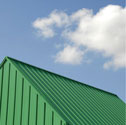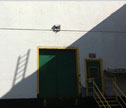In July, FM Global revised its Loss Prevention Data Sheet 1-52 (FM 1-52), "Field Verification of Roof Wind Uplift Resistance," which addresses the insurance company's field wind-uplift test requirements for roof system installations in hurricane-prone regions. The July version of FM 1-52 updates and supersedes the previous April 2009 version.
The changes
Initially, the most noticeable change to FM 1-52 is its title: "Field Verification of Roof Wind Uplift Resistance." Previous versions of FM 1-52 were titled "Field Uplift Tests."
A new Table 1 has been added to the data sheet indicating whether the negative pressure test or bonded pull test methods contained in FM 1-52 apply to various roof system types.
In FM 1-52's Section 2.1.1.8, FM Global changed its safety factor from 1.5 to 1.25; the safety factor is applied to calculated wind-uplift pressures to determine the test's calculated pass or fail pressure. This change results in a reduction of about 20 percent from the calculated pass/fail test pressures applied using FM 1-52's previous edition.
However, this value is 25 percent greater than the maximum test pressure applied when using ASTM International's similar test method standard, ASTM E907, "Standard Test Method for Field Testing Uplift Resistance of Adhered Membrane Roofing Systems."
In Section 2.1.2.7, criteria has been added that states a test will be considered a failure if a crease forms on the roof cover surface during the test before the calculated wind pressure (safety factor = 1.0) has been achieved and held. FM Global indicates its testing experience has shown a crease is evidence of a crack having formed in the insulation or cover board beneath the roof membrane, which will result in failure.
In Section 3.3, the maximum allowable deflection for a test sample to be considered suspect has been increased to 2 inches for roof systems that include thin (such as 1/2-inch-thick) cover boards or flexible mechanically attached insulation (such as fiberglass). When a cover board is adhered using ribbons of adhesive, a maximum deflection of 1 inch now is allowed. In FM 1-52's previous version, a maximum deflection of 15/16 of an inch was permitted.
Regarding FM 1-52's bonded pull test, Section 2.1.3.4 now indicates four times more bonded pull tests are recommended than when using FM Global's negative-pressure test method. Previously, an equal number of tests were permitted. FM Global indicates the reason for the increased number of pull tests is to account for the bonded pull test's smaller test area (2 feet by 2 feet) compared with the negative-pressure test (5 feet by 5 feet).
New to FM 1-52's July 2012 version is an alternative provision allowing full-time visual observation during roof system installation in lieu of performing FM 1-52's field wind-uplift testing. FM 1-52's Section 3.5—Visual Construction Observation includes minimum guidelines for the observation. It also requires a construction observer to submit daily documentation of each day's work and identify any noncompliant work as well as any related corrective measures. Construction observers with RCI Inc.'s Registered Roof Observer or Registered Roof Consultant credential qualify according to FM 1-52. Also, to avoid possible conflicts of interest, a construction observer cannot be a direct employee of the building owner, design professional or roofing contractor of record.
Concerns remain
Although FM Global has revised FM 1-52, NRCA remains concerned with the implementation of field wind-uplift testing by the negative-pressure method as a quality-assurance measure. Experience has shown FM 1-52's negative-pressure method is operator-sensitive, its results can be highly variable and it lacks the repeatability necessary to be credible.
FM 1-52's methods of interpreting results and the pass/fail criteria in the negative-pressure test method differ notably from those in ASTM E907, which is the recognized consensus-based standard and uses the same test equipment. It is interesting to note an FM Global engineer chairs the ASTM E907 task force, yet FM Global modifies the consensus standard for use on buildings it insures.
Also, a correlation still has not been established between FM 1-52's negative-pressure uplift testing and FM Global's own FM Approvals' laboratory-derived approval classifications. As a result, use of FM 1-52 as a quality-assurance method where results from FM 1-52 are compared with FM Approval's classifications is fundamentally flawed.
Based on its ongoing concerns with FM 1-52, NRCA cautions roofing manufacturers and contractors from entering into contracts where FM 1-52 testing is specified as a quality-assurance measure or is used as a basis for determining the acceptance of work.
Mark S. Graham is NRCA's associate executive director of technical services.



